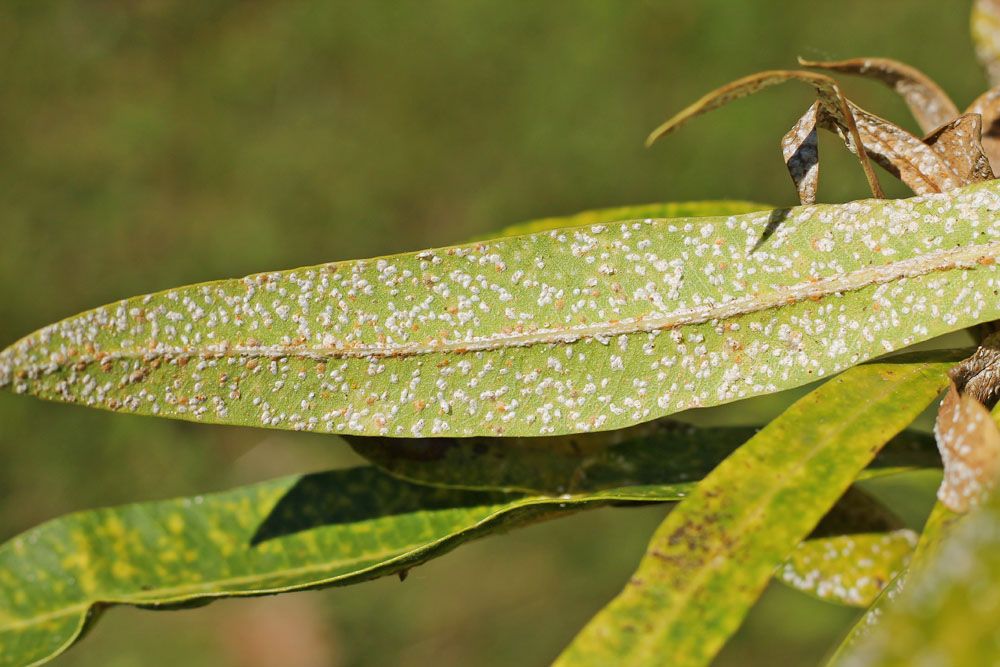
Oleander Scale – Aspidiotus nerii
Oleander Scale (Aspidiotus nerii)
Common Name: Oleander Scale
Latin Name: Aspidiotus nerii
Appearance:
Eggs:
The eggs are placed behind the female’s armor, where they mature and hatch.
Nymph:
The first phase after hatching is the only nymphal stage with legs, so the insects are called crawlers. Crawlers may remain beneath the maternal armor for many hours until the outer circumstances, particularly the temperature and humidity, are favorable. As they grow and mature, nymphs lose their skin (twice in females and 4 times in males).
Adults:
Female armored scales resemble larvae and vary from males in look and behavior. They stay beneath armor in the same area their whole life. Males are armored until they mature into flying adults.
Host plant:
Host plants include olive, apple, mango, palms, oleander and citrus.
Territory:
Oleander scale is a cosmopolitan immigrant to the Hawaiian Islands that may be found in Hawaii, Oahu, Kauai, and Maui.
Damages caused by Oleander Scale:
The presence of scale armor on the stems, leaves, and fruits of hosts indicates scale infestation. Symptoms are often proportional to the intensity of the assault (population density on the host). Infestations on the leaves and stems may induce wilting and diminish the plants’ photosynthetic area, resulting in a lesser yield. Fruit damage occurs in large infestations, frequently spotting malformation affecting market value. This is shown in olives as green dots on purple fruits. Foliage damage is especially common in ornamentals. A heavy infestation may cause leaf and shoot deformation or shriveling and plant mortality.
Life history and habits:
Adult oleander scales are greyish, dirty white, or yellowy in color, spherical in form, and have an off-centered apex. With a diameter of 2 mm, this scale resembles a little cooked egg. The crawlers that have just hatched are around 0.3 mm in length. They rapidly connect to the plant and create a scale. Colonies occur mostly on the underside of leaves. After 1 to 2 months, the female matures and starts to deposit eggs. A female adult may survive for many months. During her lifetime, each female has 30-175 offspring. At 30°C, crawlers have a significant loss in fecundity and a high death rate.
